Selecting the most appropriate supplier, be it of services or technology, can be a minefield if you do not have an effective supplier selection strategy underpinned by a strong procurement organisation and culture. We have seen many examples where organisations have decided against competitive tenders and remained with incumbent suppliers or where poorly defined business requirements have resulted in bad contracts and poor service. To help we have compiled a step-by-step guide to effective supplier evaluation and selection (timings are indicative only and are dependent on project complexity and scale).
Step 1: Initiation & Planning

The value of investing sufficient time in upfront planning before embarking on a supplier selection process cannot be underestimated.
Begin by confirming the scope of your project and then identify your internal stakeholders, including appropriate purchasing managers. Engage your stakeholders in defining the governance plan for your project and in developing the project plan, including identification of key milestones and stage gates. You should also create your communication plan, covering who you will communicate with, what you will communicate and when.
The scope, project plan, communications plan, and governance structure – including who will fulfill the role of Chair – will need to be signed off before you move to the next step.
Step 2: Tender requirements

It goes without saying that clarity over what you will buy as a result of your selection process is vitally important. Engage your stakeholders and subject matter experts to define the service scope and requirements in as much detail as possible to avoid the possibility of delays and/or ambiguous supplier proposals/commercials. You may find this achieved best through a series of SME workshops – where you can also take the opportunity to gather input to and validate your business case, and to agree on success criteria, i.e., the key financial and non-financial objectives of the exercise.
You should now be able to produce a high-level overview of the tender requirements to be used as a brief for potential suppliers.
Step 3: Tender Qualification
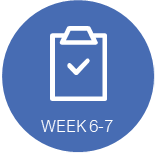
A market assessment provides an opportunity to validate your requirements against what is available in the market, build relationships with potential suppliers, and demonstrate that you are serious about tendering.
The assessment can be formalised through a request for information (RFI) or more informally through one-to-one sessions with potential suppliers. At this stage, it may also be prudent to check the financial health of potential suppliers and to request case studies to evidence previous experience in delivering similar services.
The assessment may lead to revisions to your requirements based on supplier feedback and will enable you to confirm a shortlist of suppliers that will be asked to respond to the tender.
Step 4: Tender Selection
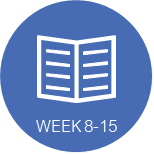
You can now finalise your tender document ensuring that requirements and key commercial principles are clearly articulated, and issue it to your shortlisted suppliers. Ensure that the submission timescales are clear, along with the consequences of missing the deadline.
You should also establish a Q&A mechanism enabling suppliers to submit and receive responses to any clarification questions they may have. All clarification questions should be logged, and responses shared with all suppliers.
Step 5: Tender Evaluation
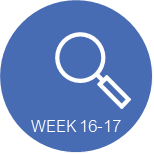
Once responses are received, you may wish to complete a ‘cold’ review and scoring exercise-based purely on proposal content and in advance of any further clarifications. Your internal stakeholders should be fully involved in the review and scoring process in order to provide a balanced view.
Your evaluation process may also include supplier workshops, providing suppliers with the opportunity to elaborate on their proposed solution and enabling you to verify solution designs and to ask clarification questions yourself.
Now is also a good time to take up any supplier references to provide further insight on potential supplier performance and capabilities.
When all proposals have been reviewed and the scoring matrix is complete, document your findings in an evaluation report including a recommendation for down selection of 1-2 suppliers for review and approval by your stakeholders.
Step 6: Tender BAFO & Selection
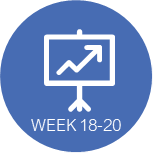
Down selected suppliers should now be invited to submit their Best and Final Offer (BAFO) which should include any revisions to their proposed solution and commercial offer. This is also a final opportunity for each party to ask any further clarification questions. Suppliers may also wish to complete a due diligence exercise to validate any assumptions made regarding metrics, their solution, resources etc.
Once again, for balance, ensure that stakeholders are fully engaged in the BAFO review and scoring. The BAFO evaluation will need to be documented and a deal summary produced including a preferred supplier recommendation for review and approval by stakeholders.
Communicate your decision to all suppliers and provide an opportunity for the unsuccessful supplier to receive feedback.
You are now ready to move to the Contracting phase!
Step 7: Contract Preparation
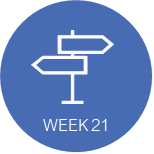
For the contracting phase, you will once again need to identify and confirm your stakeholders and the subject matter experts (SME’s) that will need to be engaged. The governance structure required once the service commences will also need to be agreed upon and documented.
Work with your stakeholders and nominated SME’s to develop negotiation and contracting plans. If Key Commercial Principles were not agreed during the Tender Selection phase this needs to be completed now along with identification of any deal principles or objectives, e.g., pricing certainty, service performance, transformation delivery etc.
For a complex procurement exercise, you may also need to identify and confirm the workstreams required to simplify management.
A mechanism should also be in place to track progress throughout the contracting phase.
Step 8: Contract Documentation
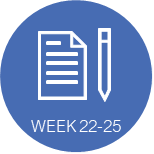
Engage your Legal Team for assistance with agreement of the contract structure and format.
Starting with either the suppliers or your own contract terms and conditions, draft the Master Services Agreement (including charges, services and performance metrics). Underpinning schedules should also be developed jointly with the supplier. These schedules may cover the service, solution, SLAs/KPIs, Transformation, etc.
Step 9: Contract Negotiation
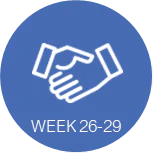
Contract negotiation may not be without its challenges as you will engage with your chosen supplier to clarify and negotiate the details of their proposal. Keep a log of all issues, and where disagreements arise ensure that these are escalated and resolved. Your senior stakeholder will be accountable for decision-making throughout. Details of recommendations and negotiated topics should also be documented.
It is likely that your supplier will also wish to clarify any obligations that you (the client) will need to meet as part of successful delivery.
Step 10: Contract Finalisation
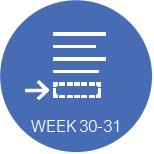
Once negotiations are complete and, hopefully, both parties are happy with the outcome, take time to have a final checkpoint review of the documentation and to verify defined terms. Review the commercials again and be clear on the impact on the business case. Ensure that the obligation tracker and plan are finalised and that all obligations on both parties are included.
Now would also be a good time to mobilise the transition team and to ensure that all governance meetings are diarised.
Finally, prepare deal sign material documenting the agreed service(s), and costs highlighting how these compare with the agreed business base and the market.
Step 11: Contract Signature
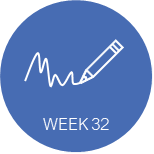
You are now ready for both parties to put pen to paper.
Begin by presenting the deal summary material to brief your senior management and your key stakeholder. Verify and provide assurance that all outstanding items have been resolved and ensure that all the necessary approval gates are negotiated.
Finally, you can then arrange a suitable time for both parties to complete the formality of contract approval and signature.
Step 12: Project Closure
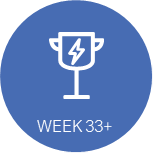
So, after months of hard work, finally, the job is complete……not quite!
There are still several important steps to be taken, starting with socialising details of the agreement/solution to all interested parties to ensure that everyone knows what to expect.
There is also the need to create a contract handbook, essentially a contract guide/summary of sufficient detail to enable anyone to understand what is in place and how the contract should be managed.
The obligations management process and accountabilities will also need to be established alongside a plan/mechanism for tracking benefits. Obviously, the organisation will want to understand that the contract does what it said on the tin and that any benefits are realised.
Governance should now be initiated and handover to the transition team can be completed.
Finally, you may want to share any lessons learned so that supplier selection processes can be updated, if required, for the benefit of future exercises.
Further Reading
If you are interested in further information about the potential pitfalls of a major contract procurement exercise, take a look at our earlier Contract Procurement article.
A bit about Peru Consulting
Peru practitioners are sourcing and supplier selection experts and specialise in helping our clients from all sectors and industries successfully manage, leverage value and pro-actively govern their third-party arrangements. Our people reflect our values, and we guarantee a collaborative, quality, agile and trusted service. As Peruvians we differentiate ourselves through our “Triple A” consulting principles: Accelerate – Identify and deliver value early, Assure – the right things and provide certainty and Augment – be a part of the team and hit the ground running.



